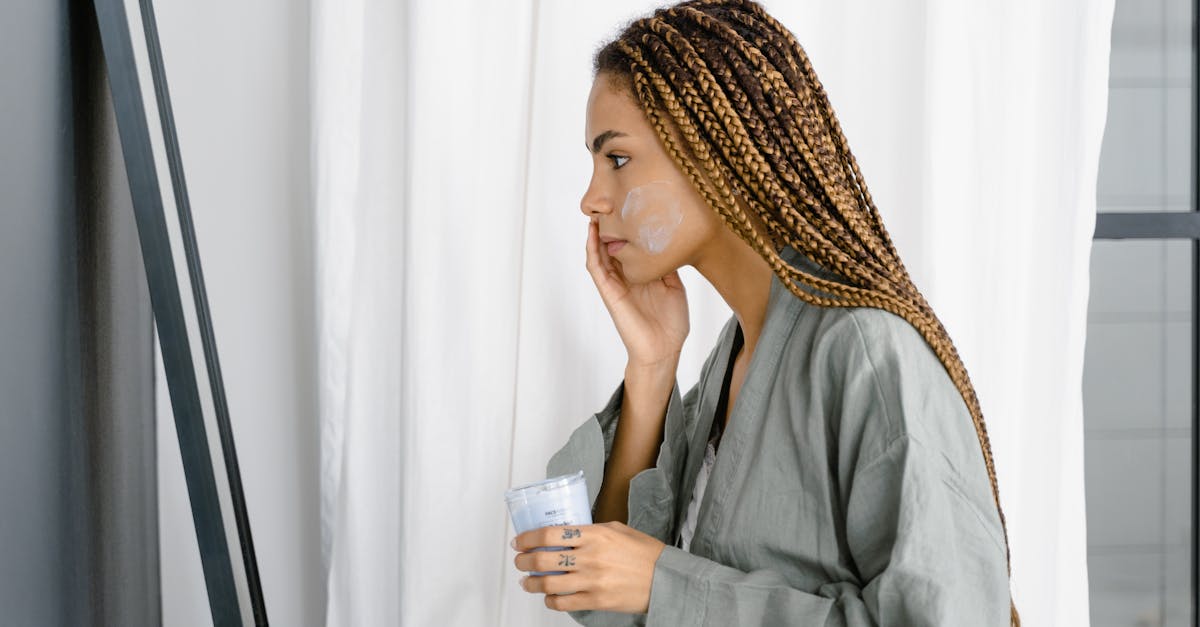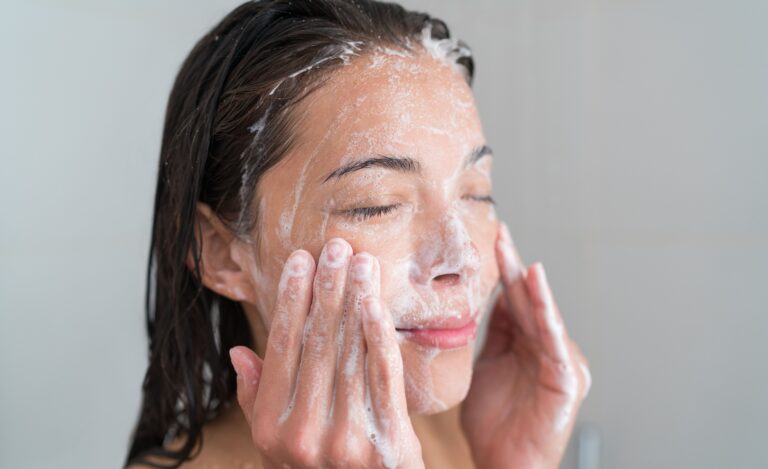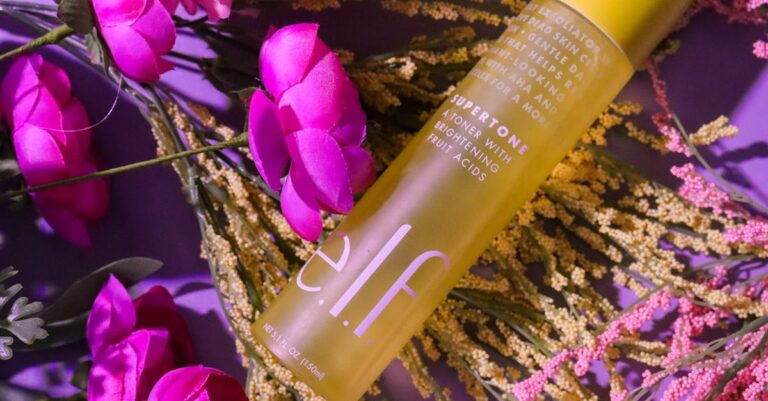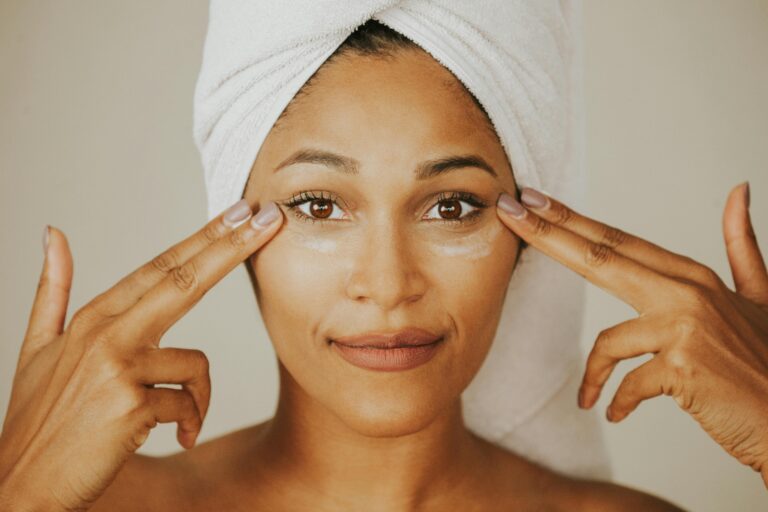At first glance, moisturizers are seen as the most basic step in a skincare routine—but don’t let their simplicity fool you. In reality, inside every jar is a carefully crafted blend of ingredients designed to keep your skin healthy, supple, and resilient.
Whether you’re dealing with dryness, oiliness, sensitivity, or signs of aging, moisturizers play a crucial role in supporting your skin barrier, preventing water loss, calming irritation, and even enhancing the effectiveness of the rest of your routine. Choosing the right one—and using it correctly—can be the difference between skin that struggles and skin that thrives.
But with shelves full of creams, gels, lotions, and balms, with different ingredients, it’s easy to feel overwhelmed and wonder: Do I really need one? And which one is right for me?
In today’s world of countless skincare products and ever-evolving beauty trends, it’s easy to overlook the true purpose of moisturizers—or to misunderstand what your skin really needs. This article is here to clear the noise and break down how moisturizers actually work, which ingredients matter, and how to find the right one for your skin type, lifestyle, and season.
- The Science Behind Moisturizers
- Key Ingredients in Moisturizers
- Types of Moisturizers
- Choosing the Right Moisturizer for Your Skin Type
- Seasonal and Environmental Considerations
- How and When to Apply Moisturizer
- How to Build a Moisturizing Routine?
- Common Myths and Misconceptions About Moisturizers
- Conclusion
The Science Behind Moisturizers
To understand how moisturizers work, we need to start with a quick look at how the skin functions—specifically, its outermost layer, the stratum corneum, also known as the skin barrier. This layer is like a brick wall: skin cells (the “bricks”) are held together by lipids (the “mortar”) to keep moisture in and irritants out.
Why Does Your Skin Need Moisture?
Your skin naturally loses water throughout the day through a process called transepidermal water loss (TEWL). Factors such as cold weather, dry air, harsh cleansers, and even aging can accelerate this loss, resulting in dryness, flaking, and a compromised skin barrier. A good moisturizer helps counteract this by:
- Replenishing hydration.
- Sealing it in.
- Restoring the skin’s protective barrier.
Key Ingredients in Moisturizers
Choosing the right moisturizer isn’t just about texture or brand—it’s also about the ingredients inside. Whether your skin is dry, oily, sensitive, or somewhere in between, understanding what’s in that jar or tube helps you make smarter choices for your skin’s needs.
Most moisturizers are built from three main categories of functional ingredients, each serving a specific purpose. An effective formula usually combines all three to hydrate, replenish, and protect the skin.
1. Humectants – The Hydrators
Humectants are the hydration powerhouses of a moisturizer. They help the skin stay plump and refreshed by pulling moisture from the air and from the deeper layers of your skin, delivering it to the surface. This makes them valuable, especially in lightweight gels and lotions for dehydrated skin.
- Hyaluronic Acid: A hydration superstar, capable of holding up to 1,000 times its weight in water. Great for nearly every skin type.
- Glycerin: A versatile, budget-friendly humectant that improves skin elasticity and hydration. You can find it in everything from drugstore creams to high-end serums.
- Urea: Hydrating at low concentrations, but also gently exfoliating in higher concentrations.
- Panthenol (Provitamin B5): Softens and soothes while delivering moisture.
- Aloe Vera: Lightweight, calming, and often found in products for sensitive or irritated skin.
2. Emollients – The Softeners
Emollients work by filling in the tiny cracks between skin cells, leaving the skin smoother, softer, and more flexible. They also support barrier repair, making them essential for dry or damaged skin.
- Squalane: A lightweight, non-comedogenic oil that mimics natural skin lipids. It hydrates without feeling greasy.
- Ceramides: Essential lipids that rebuild and protect the skin barrier, especially beneficial for dry or damaged skin.
- Fatty Acids & Cholesterol: Help restore the skin’s natural moisture barrier.
- Shea Butter: Rich and nourishing, ideal for flaky or very dry skin.
- Jojoba Oil: Closely mimics skin’s natural sebum making it helpful in balancing oily skin.
3. Occlusives – The Sealers
Occlusives form a physical barrier on the skin’s surface that prevents water loss. They’re especially valuable for dry, compromised skin, though some can feel heavier.
- Petrolatum (Vaseline): One of the most effective occlusives and despite its heavy feel is non-comedogenic.
- Dimethicone: A lightweight silicone that seals in moisture without clogging pores.
- Beeswax: Natural and protective, and often used in balms.
- Lanolin: Very effective, though it can cause allergic reactions in some people.
- Mineral Oil: A bit controversial, but undeniably effective and used in many classic formulas.
Bonus Skin-Boosting Ingredients
Many moisturizers also include “extra” ingredients that go beyond hydration. These aren’t strictly humectants, emollients, or occlusives, but they boost overall skin health:
- Niacinamide (Vitamin B3): Brightens, calms inflammation, and strengthens the skin barrier.
- Peptides: Support collagen production and skin repair.
- Antioxidants (Vitamin C, E, green tea, etc.): Protect against environmental damage and premature aging.
- Allantoin: Calms irritation and supports healing.
Ingredients to Use with Caution
Depending on your skin type, some ingredients might cause irritation or breakouts:
- Fragrance: A common trigger for sensitive or reactive skin.
- Essential Oils: Natural but often sensitizing, especially citrus, lavender, eucalyptus.
- Alcohol Denat. or SD Alcohol: Can dry out or irritate the skin if used in high amounts.
- Coconut Oil: Rich and moisturizing for dry skin, but can clog pores for acne-prone skin.
- Lanolin: Great for some, but a frequent allergen for others.
By combining humectants to draw in water, emollients to smooth and strengthen, and occlusives to seal everything in, moisturizers can deliver comprehensive care. Think of it as a team effort: humectants bring in water, emollients smooth things over, and occlusives keep it all locked in.
Types of Moisturizers
When you hear “moisturizer”, you probably imagine a cream, but moisturizers actually come in many different textures and formulations, each tailored to specific skin types, concerns, and climates. Understanding these various forms can help you choose the one that not only feels good but also works best for your skin.
Here’s a breakdown of the most common types:
1. Creams – The classic go-to moisturizers
- The texture is thick, rich, and creamy.
- The water-to-oil ratio iseither balanced or more oil than water.
- It is the best option for dry, very dry, or mature skin.
- Why use them?Creams provide intense hydration and often include occlusives to lock in moisture. They work particularly well at night or in harsh, cold weather when the skin barrier is more vulnerable.
- Tip: Look for ceramide and shea butter–based creams if you’re dealing with barrier damage or flakiness.
2. Lotions – Lightweight everyday hydration
- The texture is lightweight, fluid, and quickly absorbing.
- The water-to-oil ratio ishigher in water.
- It is the best option for normal to combination skin.
- Why use them? Lotions are versatile and comfortable for everyday use, especially under makeup or sunscreen. They are less greasy than creams, but still hydrating enough for daily use.
- Tip: In warmer climates, lotions often feel more comfortable than creams, since they don’t leave a greasy film.
3. Gels– Refreshing, water-based moisturizers
- The texture is light, bouncy, and water-based.
- The water-to-oil ratio is: mostly water, little to no oil.
- It is the best option foroily, acne-prone, or sensitive skin.
- Why use them? Gels deliver hydration without clogging pores or feeling heavy, making them great for layering with serums and for use in hot, humid environments.
- Tip: Look for gels containing hyaluronic acid or aloe vera if you want lightweight hydration that still provides soothing benefits.
4. Gel-Cream Hybrids – The best of gel and cream
- The texture is a combination of the light, cooling texture of a gel with the lasting hydration of a cream.
- The water-to-oil ratio istypically 65–80% water, but with enough emollients to mimic cream-like nourishment.
- It is the best option for combination skin or anyone who wants hydration without heaviness.
- Why use them? They deliver the “best of both worlds,” making them especially good for transitional seasons (like spring or fall) when skin needs change.
- Tip: A great option if you struggle to choose between gel and cream textures.
5. Balms – Intensive, protective nourishment
- The texture is dense, waxy, and solid at room temperature.
- The water-to-oil ratio is: little to no water—mostly oils and occlusives.
- It is the best option forextremely dry, irritated, or compromised skin.
- Why use them? Balms are deeply nourishing and protective. Think of them as emergency repair kits for the skin—perfect for flaky patches, windburn, or post-treatment recovery.
- Tip: Use balms sparingly and target specific areas (like cheeks or elbows) rather than applying all over, unless your skin is very dry.
6. Ointments – Heavy-duty moisture for compromised skin
- The texture is thick, greasy, and has a medicinal feel.
- The water-to-oil ratio is very high in oil content, often almost pure occlusives.
- It is the best option for severely dry, eczema-prone, cracked, or healing skin.
- Why use them? They’re unmatched when it comes to sealing in moisture and protecting compromised areas. Petrolatum-based ointments (like Vaseline or Aquaphor) are dermatologists’ favorites.
- Tip: Ointments are best used on specific problem areas (such as heels, hands, or lips) rather than the entire face, unless prescribed by a doctor.
Choosing the Right Moisturizer for Your Skin Type
Your skin type plays a significant role in determining what will truly work for you. Choosing a product suited to your skin’s specific needs helps prevent breakouts, irritation, and wasted money, while supporting a healthy, resilient skin barrier. Here’s how to match your moisturizer to your skin type:
1. Oily or Acne-Prone Skin
Look for:
- Oil-free or non-comedogenic formulas – These provide hydration without clogging pores, reducing the risk of breakouts.
- Lightweight textures like gels or gel-creams – Absorb quickly and leave a refreshing, non-greasy feel.
- Hydrating ingredients such as hyaluronic acid, niacinamide or zinc – Hyaluronic acid draws moisture into the skin, while niacinamide and zinc help regulate oil production and soothe inflammation.
Avoid:
- Heavy oils, such as coconut oil – Can exacerbate clogged pores and acne.
- Thick occlusive balms or ointments – May feel suffocating and worsen oiliness.
Pro tip: Even oily skin needs moisture. Dehydrated skin can trigger excess oil production to compensate, which may worsen breakouts.
Top picks:Water-based gel moisturizers and lightweight lotions with niacinamide or zinc.
2. Sensitive Skin
Look for:
- Fragrance-free, alcohol-free, minimal-ingredient formulas – To reduce the risk of irritation and allergic reactions.
- Soothing, barrier-supporting ingredients like ceramides, allantoin, panthenol, and oat extract – Calm inflammation and strengthen the skin’s natural defenses.
Avoid:
- Fragrances, essential oils, and harsh exfoliants – These can trigger redness, stinging, or breakouts.
- Long, complex ingredient lists – More ingredients increase the likelihood of irritation.
Pro tip: Patch test any new product, particularly if your skin is prone to flares or sensitivity.
Top picks:Creams or balms formulated to repair the skin barrier and products labeled “dermatologist-tested” or “for sensitive skin”
3. Dry or Dehydrated Skin
Look for:
- Rich creams, balms, or ointments with ceramides, shea butter, glycerin, and fatty acids – These restore the lipid barrier and lock in moisture.
- Occlusive ingredients like petrolatum or dimethicone – Seal hydration and prevent water loss.
Avoid:
- Lightweight or purely water-based formulas – May not provide enough long-lasting moisture.
- Foaming cleansers that strip oils – Can exacerbate dryness.
Pro tip: Apply moisturizer to slightly damp skin to help lock in moisture. For extra hydration, use a serum beforehand.
Top picks:Thick creams, especially at night and hydrating serums paired with barrier-repairing creams.
4. Combination Skin
Look for:
- Lightweight, non-greasy moisturizers – Hydrate dry areas without overwhelming oily zones.
- Gel-creams or light lotions – Provide balance for both dry and oily regions.
Avoid:
- Overly rich formulas on the T-zone – Can exacerbate oiliness or clog pores.
Pro tip: Use two moisturizers: a lighter, oil-free or gel moisturizer on oily areas (like your T-zone: forehead, nose, chin), and a richer cream on dry or flaky areas (like cheeks or jawline).
Top picks:Gel-creams with hyaluronic acid, and balancing moisturizers with niacinamide.
5. Aging or Mature Skin
Look for:
- Creams rich in peptides, ceramides, hyaluronic acid, and antioxidants – Support collagen production, strengthen the barrier, and fight oxidative stress.
- Emollient-heavy formulas – Smooth fine lines and improve elasticity.
Avoid:
- Avoid harsh alcohols and formulas that don’t provide enough hydration – Can worsen dryness and accentuate wrinkles.
Pro tip: Use richer moisturizers at night to support the skin’s repair process, and lighter, antioxidant, and peptide-rich formulas during the day.
Top picks: Anti-aging night creams with retinol (buffered with hydrating ingredients).
Seasonal and Environmental Considerations
Your skin’s needs change with the weather, your environment, and even with your daily routine. For example, a moisturizer that works perfectly in July might feel useless in January. Here’s how to adapt:
Winter (Cold & Dry Weather)
- What happens? Cold air + indoor heating = low humidity, which accelerates transepidermal water loss (TEWL)
- Skin impact: Dryness, tightness, flakiness, irritation, and increased sensitivity.
- Moisturizer needs:
- Thicker, cream-based moisturizers – Provide lasting comfort and prevent dehydration
- Occlusive ingredients like petrolatum or dimethicone – Seal in water and protect against harsh air.
- Barrier-repairing agents such as ceramides and fatty acids – Replenish lipids lost in dry conditions.
- Pro tip: Apply moisturizer right after showering or cleansing to lock in surface water before it evaporates.
Summer (Hot & Humid Weather)
- What happens? Heat triggers higher sweat and oil production, making heavy creams feel suffocating.
- Skin impact: Greasiness, clogged pores, and increased breakouts.
- Moisturizer needs:
- Lightweight, non-comedogenic formulas – Hydrate without adding extra oil.
- Water-based gels or gel-creams – Provide a refreshing, breathable layer of hydration.
- Humectants like hyaluronic acid and glycerin – To keep skin hydrated without heaviness.
- Pro tip: Use a moisturizer with built-in SPF during the day, but don’t rely on it as your only sunscreen.
Dry Climates (Desert, Cold Plains, High Altitudes)
- What happens? Because of the little moisture in the air, skin constantly loses water through evaporation.
- Skin impact: Persistent dryness, rough patches, and a compromised barrier.
- Moisturizer needs:
- Formulas combining humectants and occlusives – Humectants draw in hydration, while occlusives trap it in.
- Look for creams or balms – They offer longer-lasting comfort and prevent water loss.
- Pro tip: For extra hydration apply a toner or hydrating mist before moisturizer.
Humid Climates (Tropics, Coastal Areas)
- What happens? High humidity means the air is already full of moisture, making heavy creams feel sticky.
- Skin impact: Increased oiliness, congestion, and sweat-induced breakouts.
- Moisturizer needs:
- Lightweight, fast-absorbing textures – Prevent skin from feeling smothered.
- Gel-based or lotion formulas with humectants but minimal occlusives – Maintain hydration without heaviness.
- Pro tip: Don’t skip moisturizer just because the air is humid—without it, your skin can become dehydrated and produce even more oil. Choose a lightweight option instead
Urban & Polluted Environments
- What happens? Pollution particles and environmental aggressors stress the skin, breaking down collagen and weakening the skin’s barrier, which accelerates the aging process.
- Skin impact: Dullness, inflammation, premature aging, and heightened sensitivity.
- Moisturizer needs:
- Antioxidantslike vitamin C, niacinamide, or green tea – Neutralize free radicals before they damage the skin.
- Barrier-strengthening components like ceramides – Strengthen your skin’s defenses against pollutants.
- Pro tip: Use moisturizer as your final skincare barrier to protect against environmental stressors and always apply SPF.
Extra tips:
- Traveling often? Opt for a lotion or gel-cream. It’s the most adaptable across climates.
- Skin under stress (eczema, post-treatment, barrier repair)? Choose balms and ointments for maximum protection and recovery.
How and When to Apply Moisturizer
Moisturizer may seem like the easiest step in skincare — just rub it on and you’re done. But timing and technique can make a big difference in how well it works. Here’s how to get the most out of your moisturizer:
When to Apply Moisturizer?
Twice daily is the general rule:
- First time in the morning to create a hydrated base for your skincare and makeup while protecting against environmental stressors throughout the day.
- Second time in the evening to nourish and support repair while your skin regenerates overnight.
Additional times to apply:
- After cleansing – Helps restore hydration stripped during washing.
- After applying serums or active treatments (like retinol or acids) – Locks in benefits and minimizes irritation.
- After shaving or exfoliating (to soothe the skin) – Calms freshly exposed skin and reduces sensitivity.
How to Apply Moisturizer (The Right Way)?
- Start with clean skin: Moisturizer works best when skin is clean and slightly damp — not dripping wet, just gently patted dry.
- Use the right amount:
- Face: A pea to nickel-sized amount, depending on product thickness.
- Body: Again, it varies, because of the cream’s texture. Apply enough to lightly coat without overloading — more product doesn’t always mean more benefit.
- Warm it up (optional): Rub the product between your fingers before applying to warm it slightly — this helps it spread more evenly and absorb faster.
- Pat or gently massage:
- Apply using upward, circular motions to boost circulation.
- Don’t tug or pull—especially around the delicate eye area.
- Layer properly: Moisturizer usually goes after serums and before sunscreen in your routine, while at night it’s typically the final step unless you’re applying an occlusive after.
Extra Tips for Maximum Moisturization
- Seal it in: If your skin is extra dry, try the “slugging” method (applying a thick occlusive like petrolatum as the final step at night) to prevent overnight water loss
- Layer smartly: Use a hydrating toner or serum first, then apply your moisturizer to lock everything in.
- Don’t forget your neck, chest, and hands—they’re often the first to show signs of aging.
Common Mistakes to Avoid
- Using heavy moisturizers under makeup without giving time to absorb – Can cause pilling and uneven application.
- Rubbing too harshly or using too much product – Can irritate skin and waste product.
- Skipping SPF after your morning moisturizer – Sunscreen is essential; moisturizer alone won’t protect against UV damage.
How to Build a Moisturizing Routine?
A moisturizer isn’t just a one-and-done step—it’s the anchor that ties your whole skincare routine together. The products you apply before and after can influence how well your moisturizer works. Here’s how to build a routine that keeps your skin balanced and thriving.
Step-by-Step Daily Moisturizing Routine
Morning Routine: Protect and Prep
- Cleanser – Start with a gentle cleanse to remove overnight sweat, oil, and residue.
- Toner(optional) – If you use one, choose a hydrating or pH-balancing toner to help prep the skin to absorb moisture more effectively.
- Serum(optional) – Add actives like Vitamin C or niacinamide to target dullness, uneven tone, or oiliness.
- Moisturizer – Opt for a lightweight, fast-absorbing formula that hydrates without leaving a heavy film.
- SPF – Always finish with broad-spectrum sunscreen (SPF 30+). UV rays penetrate clouds and windows, so daily use is non-negotiable. Some moisturizers or foundations contain SPF, but they often don’t provide enough protection.
Pro tip: Think of your morning routine as armor—each layer protects your skin from external stressors, such as UV rays, pollution, and dehydration.
Night Routine: Repair and Replenish
- Cleanser – Remove makeup, sunscreen, oil, and daily buildup with a gentle cleanser. Double-cleanse if you wear makeup, especially if it’s heavy makeup.
- Exfoliant(2–3x a week, optional) – If it is part of your routine, use chemical exfoliants (AHA, BHA) to prevent dead skin from blocking moisturizer penetration. However, avoid overexfoliation, as it can irritate the skin.
- Toner/Essence (optional)– Helps hydrate and prep the skin.
- Serums/Actives (optional) – Nighttime is ideal for retinol, peptides, or acids since skin goes into repair mode while you sleep.
- Moisturizer – Use a creamier, more nourishing formula to repair and lock in hydration in order to support overnight recovery.
- Occlusive (also known as “slugging”, optional)– Apply a thin layer of petrolatum or balm to lock in all the ingredients. This is especially helpful if your skin is very dry or sensitive.
Pro tip: Night routines are all about recovery—your moisturizer works harder while your skin is most active in regeneration.
Customizing Your Routine
- Minimalist approach? Stick with the basics — gentle cleanser + a moisturizer + SPF.
- Barrier repair focus? Use a hydrating toner and a serum with ceramides/hyaluronic acid before applying a barrier-strengthening cream.
- Anti-aging focus? Add retinoids or peptides at night, paired with a richer moisturizer to reduce irritation and support firmness.
- Acne-prone skin? Opt for lightweight, non-comedogenic moisturizers and include actives like niacinamide or salicylic acid before applying moisturizer.
Think of moisturizer as the bridge between active treatments and your skin barrier—it helps actives work effectively without leaving skin vulnerable.
Weekly Add-Ons
- Hydrating masks (1–2x a week): A quick way to boost moisture levels and soothe stressed skin.
- Exfoliation (1–3x a week): Regular exfoliation clears away dead skin, allowing your moisturizer to penetrate evenly instead of sitting on top of it.
- Facial oils (optional): Add a drop or two to your moisturizer during winter or dry spells for an extra layer of nourishment.
Common Myths and Misconceptions About Moisturizers
With skincare tips circulating on TikTok, YouTube, and from well-meaning friends, it’s no surprise that myths about moisturizers, and not only, are often repeated. Let’s break down some of the most common misconceptions—and the science-backed truths behind them.
Myth #1: “If my skin is oily, I don’t need moisturizer.”
Truth: Oily skin still needs hydration! In fact, skipping moisturizer can trigger even more oil production as your skin tries to compensate for the dryness. The key is choosing the right formula: lightweight, oil-free, or gel-based moisturizers that hydrate without clogging pores.
Myth #2: “Drinking water is enough to moisturize my skin.”
Truth: Staying hydrated internally is essential for overall health, but it’s not a substitute for topical moisturization. Moisture loss happens at the skin’s surface, and only topical ingredients like humectants (to attract water) and occlusives (to trap it in) can prevent transepidermal water loss (TEWL). A water bottle can’t replace a well-formulated cream.
Myth #3: “I only need moisturizer when my skin feels dry.”
Truth: Waiting until your skin feels dry means the damage is already done. By moisturizing consistently—morning and night—you reinforce your skin’s barrier, prevent dehydration, and maintain your skin balanced before symptoms appear. Prevention is always easier than repair.
Myth #4: “Natural ingredients are always safer.”
Truth: Natural doesn’t automatically mean safer or more effective. Poison ivy is natural, too, and many essential oils and botanical extracts can be irritating, especially for sensitive skin. What matters most is formulation, safety, and evidence—not whether an ingredient is natural or synthetic. A lab-made ceramide can often be gentler and more effective than a plant extract.
Myth #5: “More moisturizer = better results”
Truth: Applying too much product won’t make your skin healthier. It can actually clog pores, leave a greasy film, or cause pilling under makeup. The right amount is just enough to lightly coat your face and neck, creating a protective layer without excess residue.
Myth #6: “Serums replace moisturizer.”
Truth: Serums are usually water-based and meant to deliver specific actives, like vitamin C or niacinamide, but they don’t seal in hydration. Moisturizers, on the other hand, contain occlusives and emollients that seal in moisture and protect your barrier. Think of serums as the “specialists” and moisturizers as the “support system” that makes their work last.
Myth #7: “Anti-aging moisturizers erase wrinkles.”
Truth: Moisturizers can soften theappearance of fine lines by plumping and hydrating the skin, but they won’t remove deep wrinkles. For that, you’ll need actives like retinoids, peptides, or professional treatments. Moisturizers are essential in the process, but they aren’t miracle workers.
Pro Tip: If a skincare claim sounds too good to be true, it probably is. The best results come from consistent use of well-formulated products tailored to your skin — not miracle promises on a label.
Conclusion
So, do you really need a moisturizer? Absolutely. Moisturizer isn’t just another step in your skincare routine — it’s the foundation that keeps your skin balanced, protected, and comfortable. Finding the right one for you depends on your unique needs. Whether that means a lightweight gel for oily skin, a soothing cream for sensitivity, or a richer balm for dry winter months, there’s a formula designed to support your skin.
Remember: moisturizers don’t have to be complicated, but they do have to be consistent. Choose wisely, apply daily, and your skin will thank you—not just today, but for years to come.




